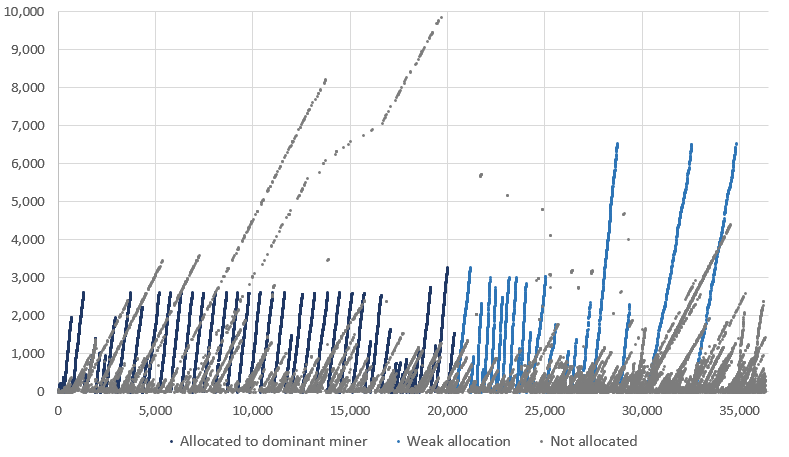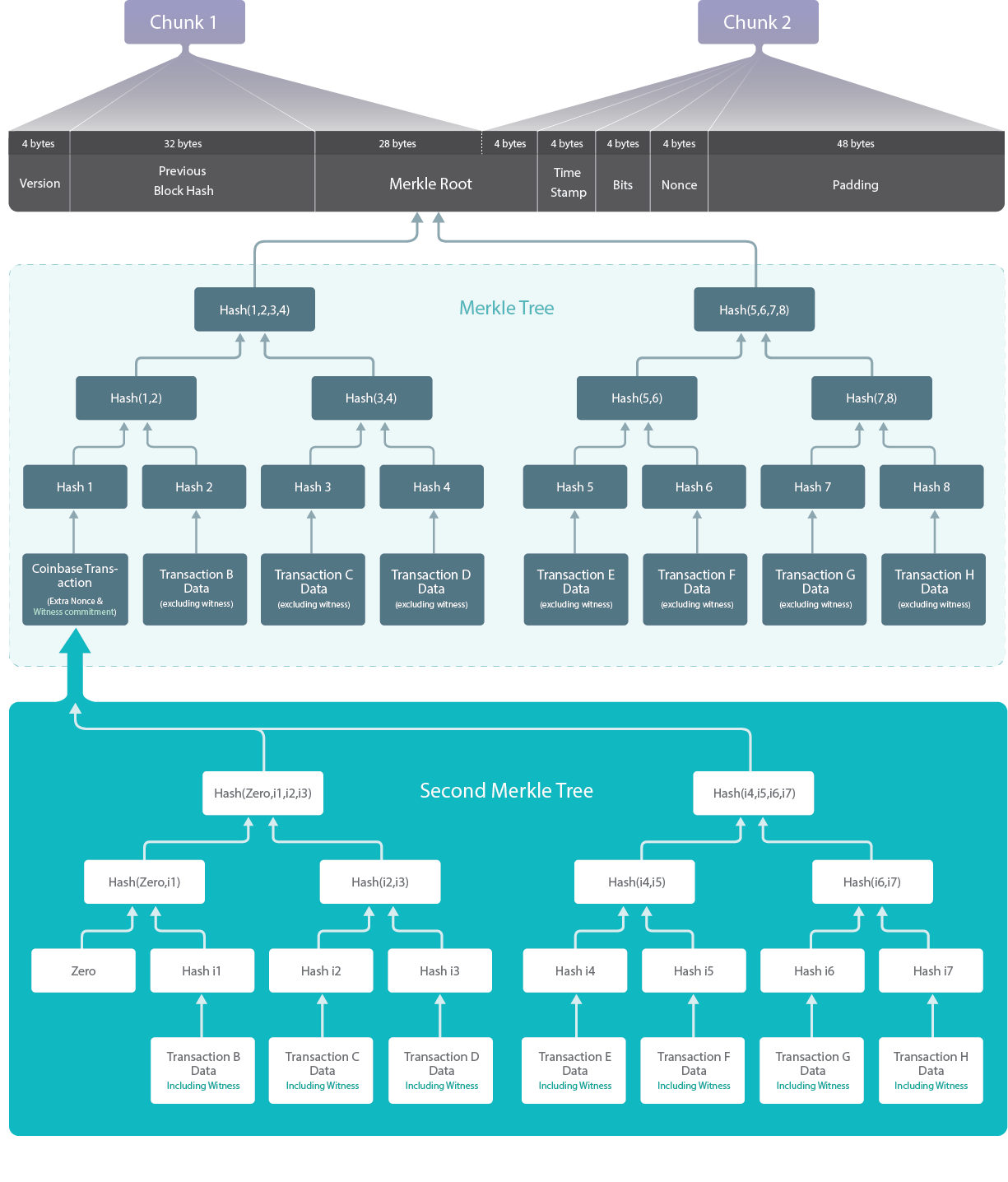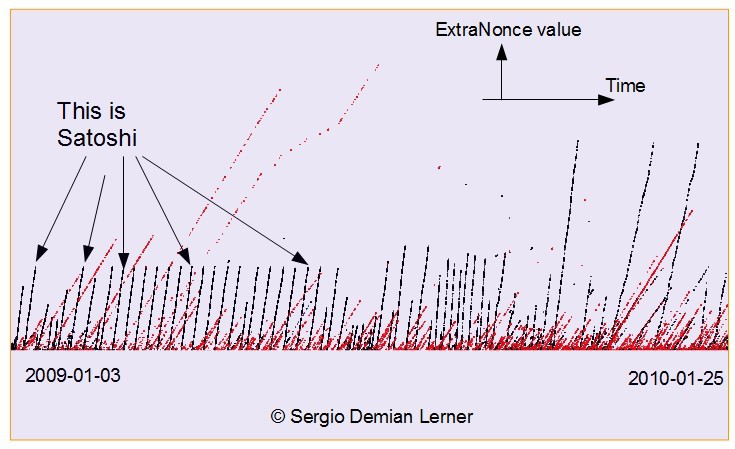Abstract: We examine the extent to which one miner dominated Bitcoin in 2009. We review Sergio Demian Lerner’s 2013 analysis, where he discovered that the increase in the ExtraNonce value in the block can potentially be used to link different blocks to the same miner. We build on his analysis and conclude that although the evidence is far less robust than many assume, there is reasonable evidence that a single dominant miner in 2009 could have generated around 700,000 bitcoin. Although our analysis itself is weak and there is no perfect way of approaching this problem.

Bitcoin blocks mined in 2009 – ExtraNonce vs block height

(Source: BitMEX Research, Bitcoin blockchain)
The history of the debate over the dominant miner in 2009
Towards the start of April 2013, blockchain researcher Sergio Demian Lerner attempted to argue that Satoshi had mined a million bitcoin in 2009. The logic behind this assertion was that the hashrate throughout 2009 was at a low level, around 7 million hashes per second and this was said to be consistent with one miner being highly dominant. At the same time this hashrate was around the same to that which was present in Bitcoin’s first 14 days, which Sergio assumes may be a period in which Satoshi was the only miner. Many in the community were sceptical of Sergio’s claims. The scepticism seems to be based on the following:
- The 7 MH/second estimate is based on block timestamps and unreliable, nor is the sample size large enough
- There is no reason to believe Satoshi mined alone in the first 14 days
- Many individuals recalled mining themselves in the period
- Sergio’s assumptions about hardware were incorrect
It is likely that some people could have been biased in dismissing Sergio’s claims, since if Satoshi had mined a significant proportion of the early coins, in the eyes of some that could damage the monetary integrity of the system. However, in our view, the evidence Sergio initially presented was somewhat weak.
The ExtraNonce bombshell
Just a few days later, Sergio then posted a far more persuasive argument on his blog, with much stronger evidence that a single miner was dominant. This then eventually convinced many in the community and to this day many people believe Satoshi is likely to have mined around one million bitcoin.
Sergio’s evidence centred around something called the ExtraNonce. The ExtraNonce is not part of the Bitcoin protocol, in that it is not part of the consensus rules nor is there a formal specification about how to interpret the field. The ExtraNonce is an area in the Coinbase transaction which can vary after several hashing attempts to provide extra entropy for miners, once the standard nonce in the block header has been used up. As the image below illustrates, as the ExtraNonce changes, the impact works its way up the merkle tree into the block header (although in 2009 most blocks contained only the Coinbase transaction, as the network was not used for transactions.)

(Illustrative diagram of the structure of a Bitcoin block)
Sergio published the below picture, with the ExtraNonce on the y-axis and the blockheight on the x-axis (He incorrectly labeled the x-axis as time). The image shows that the ExtraNonce increase over time, in a series of slopes. Some of the slopes (in black) are said to be of a similar gradient, not to overlap and to go back down to zero once they reach a certain height. This is said to demonstrate that all the black lines belonged to one miner (potentially Satoshi) and that this miner now controlled almost a million Bitcoin. Although the technical points about the gradient of the slopes, the height and the lack of overlap may be quite difficult to appreciate and evaluate, the image itself is clearly very powerful and persuasive, in our view.

(Source: Bitslog)
The new BitMEX Research allocation of blocks to the dominant miner
We decided to repeat Sergio’s analysis, except our objective was to count the blocks mined by the apparent single entity and allocate all the blocks. The excercise was challenging, since the slopes interact with many other points. It is therefore impossible to do an accurate allocation. As a result, our analysis is far from perfect and we used a variety of methods, including statistical analysis, random number generators and even manual review to allocate some blocks. We will have made many errors and we do not claim our methodology is robust or scientific. However, as far as we are aware, this is the first attempt to allocate every block in 2009 as belonging to the apparent single entity or not. The below high resolution image below represents our allocation for every block in 2009.
Bitcoin blocks mined in 2009 – Allocation to the dominant miner – ExtraNonce value (y-axis) vs block height (axis)

(Source: BitMEX Research, Bitcoin blockchain)
Analysis of the allocation
Up to August 2009 we agree with Sergio’s conclusion. There are 22 slopes prior to August, which all have both similar height and gradient (Around an increase in the value of the ExtraNonce by 4 per block found). At the same time these slopes almost never overlap. (The tiny amount of apparent overlap in some instances in less than 5 blocks and therefore may just be coincidence).
After August 2009 the pattern breaks down to some extent. The gradient of the slopes varies considerably (from 1.1 nonces per block to 10 nonces per block). At the same time the height of the slopes is inconsistent and there are many large gaps between them. Therefore although the image still looks compelling, the evidence that the miner is one entity is somewhat weak, in our view. We have presented results below, which include figures both pre and post August 2009.
| Category | Number of blocks | Number of bitcoin |
| Allocated to the dominant miner | 14,815 | 740,750 |
| Weak allocation (After August 2009) | 4,553 | 227,650 |
| Total | 19,368 | 968,400 |
| Not allocated | 16,920 | 846,000 |
| Grand total | 36,288 | 1,814,400 |
(Source: BitMEX Research, Bitcoin blockchain)
Debate over the strength of the analysis
| Supporting the analysis | Weaknesses of the analysis |
|
|
Conclusion
In conclusion, although there is strong evidence of a dominant miner in 2009, we think the evidence is far less robust than many have assumed. Although a picture is worth a thousand words, sometimes pictures can be a little misleading. Even if one is convinced, the evidence only supports the claim that the dominant miner may have generated significantly less than a million bitcoin in our view. Perhaps 600,000 to 700,000 bitcoin is a better estimate.
None of the above says much about whether the dominant miner was Satoshi, although we know Satoshi mined block 9, which we have allocated to the dominant miner in our analysis. However this is in a slope of just 11 blocks, so it’s certainly not conclusive. Whoever the dominant miner was, it is of course possible the keys have been lost or discarded by now.
We will end with one famous quote from Satoshi to consider:
Why delete a wallet instead of moving it aside and keeping the old copy just in case? You should never delete a wallet.
(Source: Bitcointalk)
Although, maybe we are giving that quote out of context…
